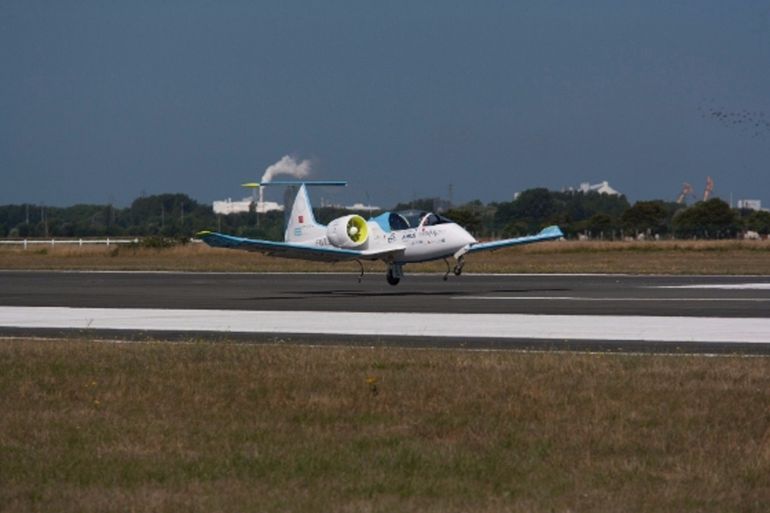European aircraft manufacturer Airbus’s innovation team has made an electric propeller aircraft that has crossed the English channel in a historic flight. No such plane has endured a flight that long. The E-Fan technology of the Airbus has survived the small journey to become a part of history. But the only problem is that a French Aerobat named Hughes Duval has claims of a similar flight twelve hours ago in Cri-Cri electric plane. Now who will go down in history? We don’t know, but the technology has finally arrived. We are thankful for that!
The first ever flight across the famous channel was undertaken by Luis Bleriot in 1909. Although this flight isn’t of the same magnitude in effect, still it is kind of cool considering it will pave the way for future green electric technology. The first electric plane to cross the channel has its significance, and the eyes of the world were fixed on the channel during these days. There were as much as three competitors vying to be the first ones to do it.
Airbus’s attempt showed that its team was dedicated to this cause. More than 14 million pounds were pooled in by the company for this endeavor. The flight itself has been eclipsed by the Solar Impulse 2 and other long-range projects. But, the idea is far more practical as it wants to achieve long-distance travel possible with the help of electric planes instead of those negative entropy jets. The idea aims to have an electric plane capable of transporting 100 people by 2030.
The first competitor to bite the dust was Pipistrel, a Slovenian company who had to abandon their efforts when the motor manufacturers Siemens had to back off from the project. The reason for this failure was that Simens didn’t want the aircraft to fly over water. Airbus’s E-Fan, on the other hand, took off from Kent on July 10 and reached the destination in 36 minutes while flying over the channel in between. With an all-composite construction, the two-seater E-fan is 22 feet long and has a wingspan of 31 feet. Its appearance mightily resembles the RC plan we all have flown throughout our lives.
The plane is powered by 250-volt Lithium-ion batteries, and they are centrally mounted. However, despite the extraordinary happening, the event’s celebrations were short-lived as Associated Press reported that Hughes Duval had completed the same journey twelve hours before. With a smaller wingspan of around 16 feet and powered by 35 horsepower Electrovia motors, the Cri-Cri appears the better machine as it flew at 65 miles per hour and reached the destination in a meager 17 minutes.
One difference on which the Airbus will fight for rights is that Duval’s plane was towed into the air by an ordinary aircraft, so the flight wasn’t complete. This assisted take-off may jeopardize its claim to be the first electric plane to have crossed the channel. Airbus seemed confident that it won’t count. We don’t take sides naturally, but I think Duval’s plane was better, and it completed it first. If it can land correctly, how hard it can be to make it take-off.

